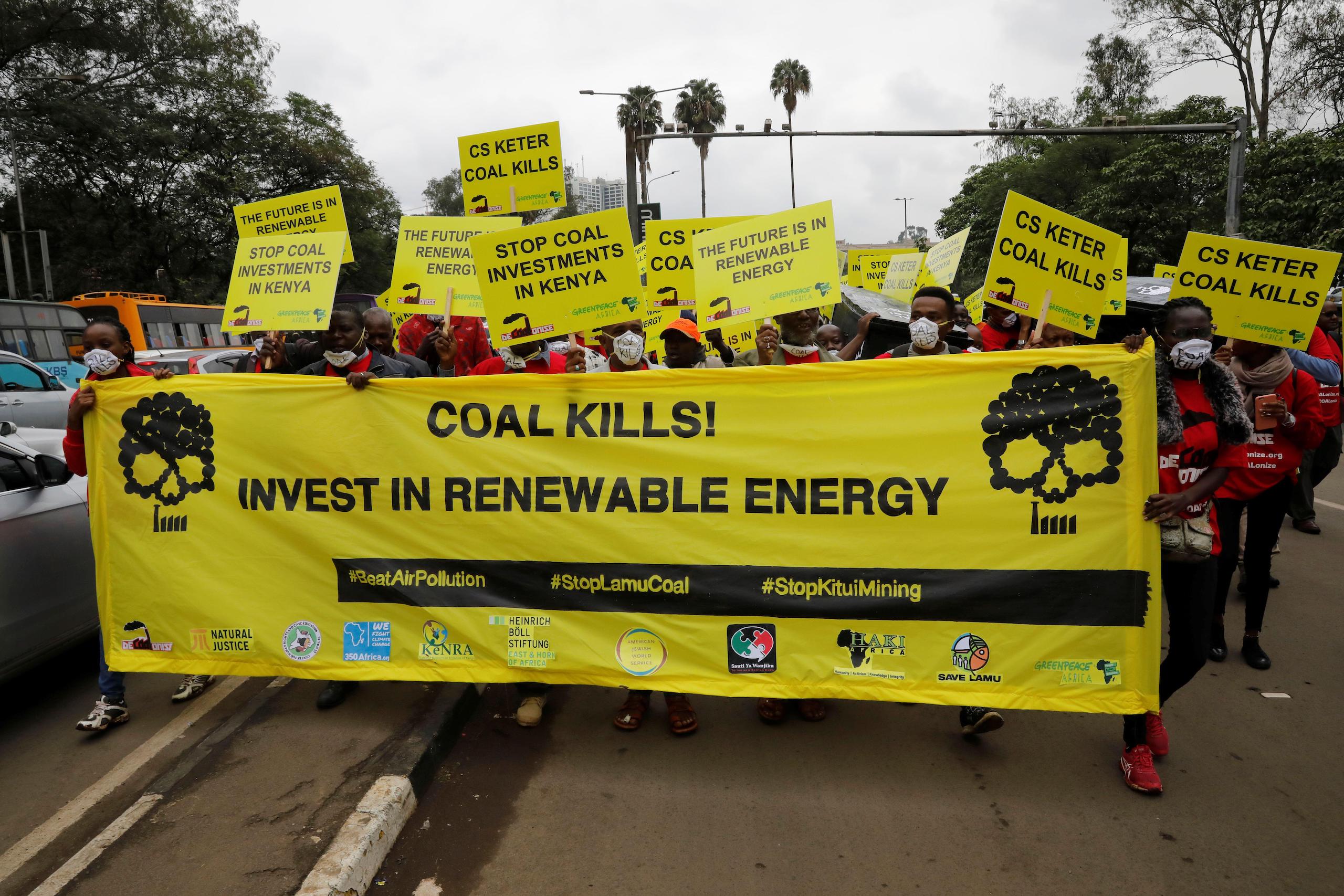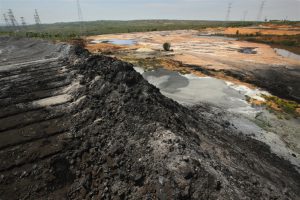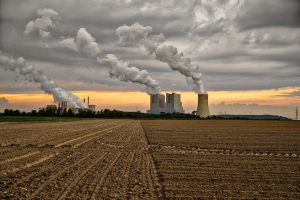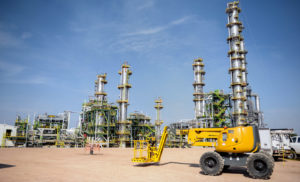Backers of Kenya’s Lamu coal plant have been instructed by the courts to conduct a new environmental impact assessment and halt work on the project, in a ruling celebrated by local environmental groups.
The mostly Chinese-financed plant is the biggest coal project in eastern and central Africa. Lamu county is on Kenya’s northern coast and includes a small archipelago in the Indian Ocean. The area is a World Heritage Site and a major draw for tourists.
The June 26 ruling by the National Environmental Tribunal cancelled the licence given to Amu Power by the National Environment Management Authority.
“The people of Lamu and Kenyans finally have got justice three years after knocking on the doors of the Tribunal in 2016,” said Omar Elmawi, head of Decoalonize, a local activist group.
Construction of the project was expected to start in 2016 but was delayed following a legal challenge from Decoalonize and Save Lamu.
“We won because we had a very strong case that was anchored on myriad grounds including inadequate public participation, environmental and health impacts. Also because of economic unviability of the project among others,” Elmawi told chinadialogue after the verdict was delivered.
“We are happy we won’t be subjected to all these impacts as the project proponents and their friends make profits at our expense,” he added.
Danger to marine life
Those opposed to the project argued that it would pollute local air and water, increase the country’s carbon emissions, and put thousands of farmers and fishermen out of work.
“We will have to forget Lamu as we know it today,” complained Somo Mohammed Somo, a fishing dhow captain and chairman of the Lamu fishermen association, before the decision was announced. He said that water pollution would harm the mangrove forests, an important breeding ground for fish, and risk the livelihoods of more than 6,000 fishermen.
“We are saying no to this project. What we need in Lamu is something like a fish processing factory, or an international airport to bring in more tourists,” he said.
Activists feared that fly ash and the release of water used to cool the coal plant would damage the marine ecology.
“Experts have warned against this as the rise in temperature from the now hot water will impact negatively on the marine life, and fishermen will have less or nothing catch. Additionally, effluent from the plant will have elements including mercury, which when disposed in the sea will be consumed by the fish which in turn will be consumed by the local community,” said Elmawi.
A study on the plant’s potential impacts by Greenpeace found that air pollution would affect almost half a million people and result in 1,600 premature deaths and 800 low birth weight births over 40 years of operation. In addition, polluted air and fly ash – the latter stored in an area prone to coastal flooding – would lead to acid rain and the deposition of toxic heavy metals on farmland.
However, the ruling does not spell the end of the plant. Amu Power has 30 days to appeal the decision and restore its environmental and social impact assessment license. Alternatively, it can conduct a new assessment in the hope of being awarded a fresh license. This would require the company to properly consult the public and outline clear plans for managing fly ash.
Ambassadors weigh in
In a surprise move both the Chinese and US ambassadors to Kenya commented on the court’s decision.
US ambassador, Kyle McCarter, tweeted: “Kenya needs a larger less costly base load of power first. Coal is the cleanest least costly option. Investors will come.”
In contrast, the Chinese ambassador Wu Peng said that he was personally opposed to coal power and that “It has been and always will be the people of Kenya who can decide whether there would be a coal power plant or not,” in comments published by campaign groups that were invited to meet him.
While the US ambassador’s comments were perhaps expected given the Trump Administration’s attempts to stem the decline in the US coal sector, the Chinese ambassador’s invitation to meet the campaign groups was a surprise as attempts to discuss the project with the Chinese embassy were previously ignored.
“We believe they didn’t take the letters seriously until when they saw that the communities and the people of Kenya were in the streets protesting and trying to reach the Chinese embassy,” said Elmawi, who attended the meeting.
Who is backing the Lamu coal plant?
The US$2 billion coal plant was agreed in May 2017 when a high-level Kenyan delegation visited China for bilateral trade and development talks. An investment agreement was signed between Chinese energy company China Power Global, the Kenyan government, and Amu Power Limited, which is a joint venture between Gulf Energy and Centum Investment.
The Industrial and Commercial Bank of China (ICBC) committed to finance the venture to the tune of US$1.2 billion, a 60% stake in the project.
“If the Chinese withdrew from funding this project it would surely collapse,” said Elmawi.
“We know that the Chinese government owns a large stake of ICBC and therefore they can’t treat this as if it is just an issue of private Chinese companies being involved in the Lamu coal plant,” he added.
Kenya’s renewable resource
To get a new license, Amu Power must also explain whether the proposed 1,050 megawatt coal plant is in line with the country’s climate change legislation. The planned electricity capacity is nearly half of Kenya’s installed generation of around 2,400 megawatts.
The project would hinder Kenya’s ability to meet its goal of reducing greenhouse gas emissions by 30% by 2030 relative to a business as usual scenario. Kenya’s emissions in 2010 were equivalent to 73 million tonnes of CO2. The coal project alone would add 8.8 million tonnes per year.
Mithika Mwenda, executive director of climate group Pan African Climate Justice (PACJA) said countries are abandoning coal power and other forms of “dirty” energy in favour of renewables and that Kenya should focus on tapping its enormous clean energy potential.
A report last month from the Institute for Energy Economics and Financial Analysis, a US-based thinktank, found that the Lamu coal plant would result in excess electricity capacity that would cost electricity consumers more than US$9 billion over a 25-year period.
Amu Power claimed that the project was in line with Kenya’s “Vision 2030” development plan and would not increase prices. It also claimed the project was in line with the government’s aim to turn Lamu into a regional trade and transport hub. The Lamu Port-South Sudan-Ethiopia-Transport (LAPSSET) corridor includes a port in Lamu, and envisages improved rail, road and air links.
According to China Biodiversity Conservation and Green Development Foundation (CBCGDF), a Chinese environmental NGO, it’s important for China’s foreign enterprises to observe the principles of low-carbon and environmentally friendly projects, wherever they invest.
Jinfeng Zhou, secretary general of CBCGDF, said it hopes: “to assist Chinese stakeholders, including [the project] designer, developers and financial investors to enhance communication with the local population in order to reach a consensus on the Lamu Project.”
“We advocate contractors to use clean energy technologies to minimise negative impacts from such projects on [the] local environment. Only by following the path of green development can the Belt and Road Initiative achieve sustainable development,” he added.









